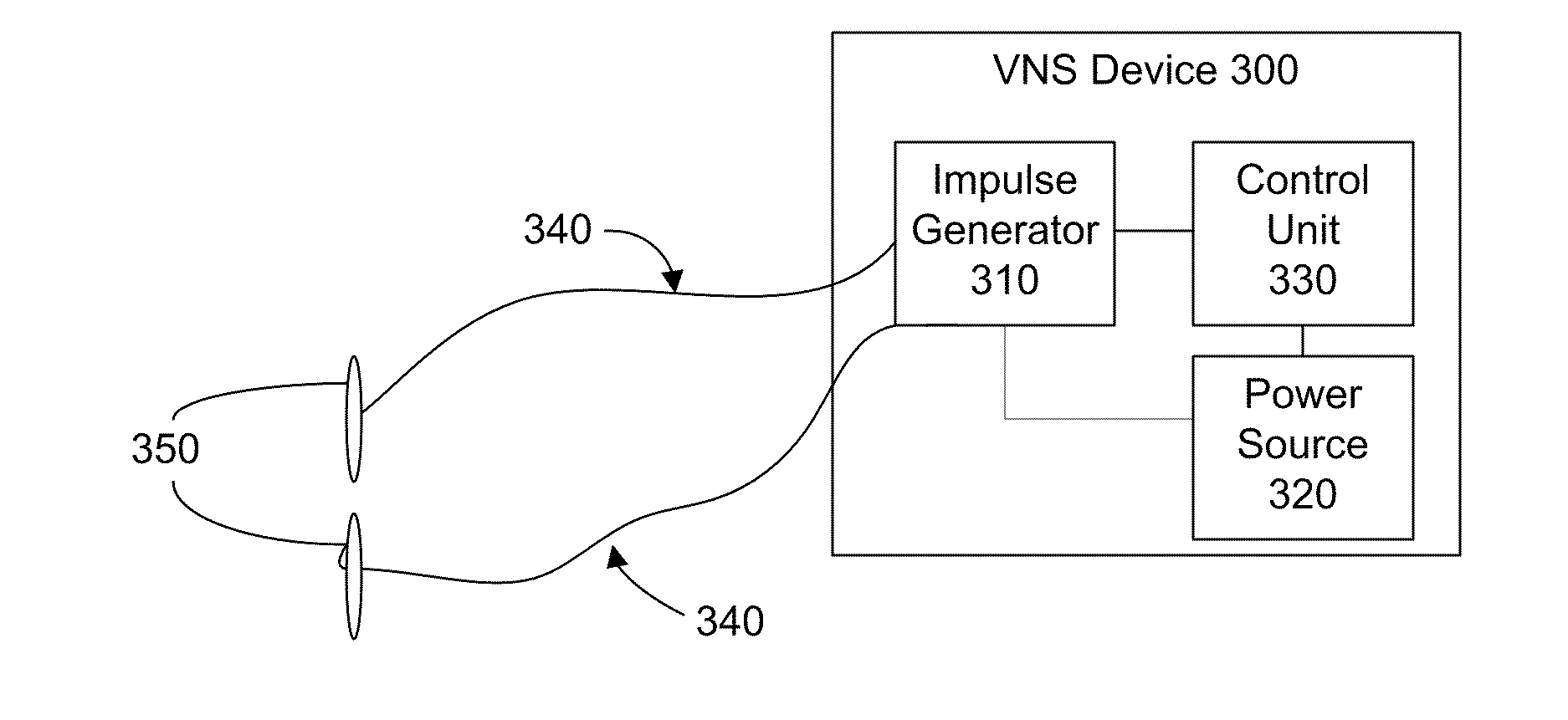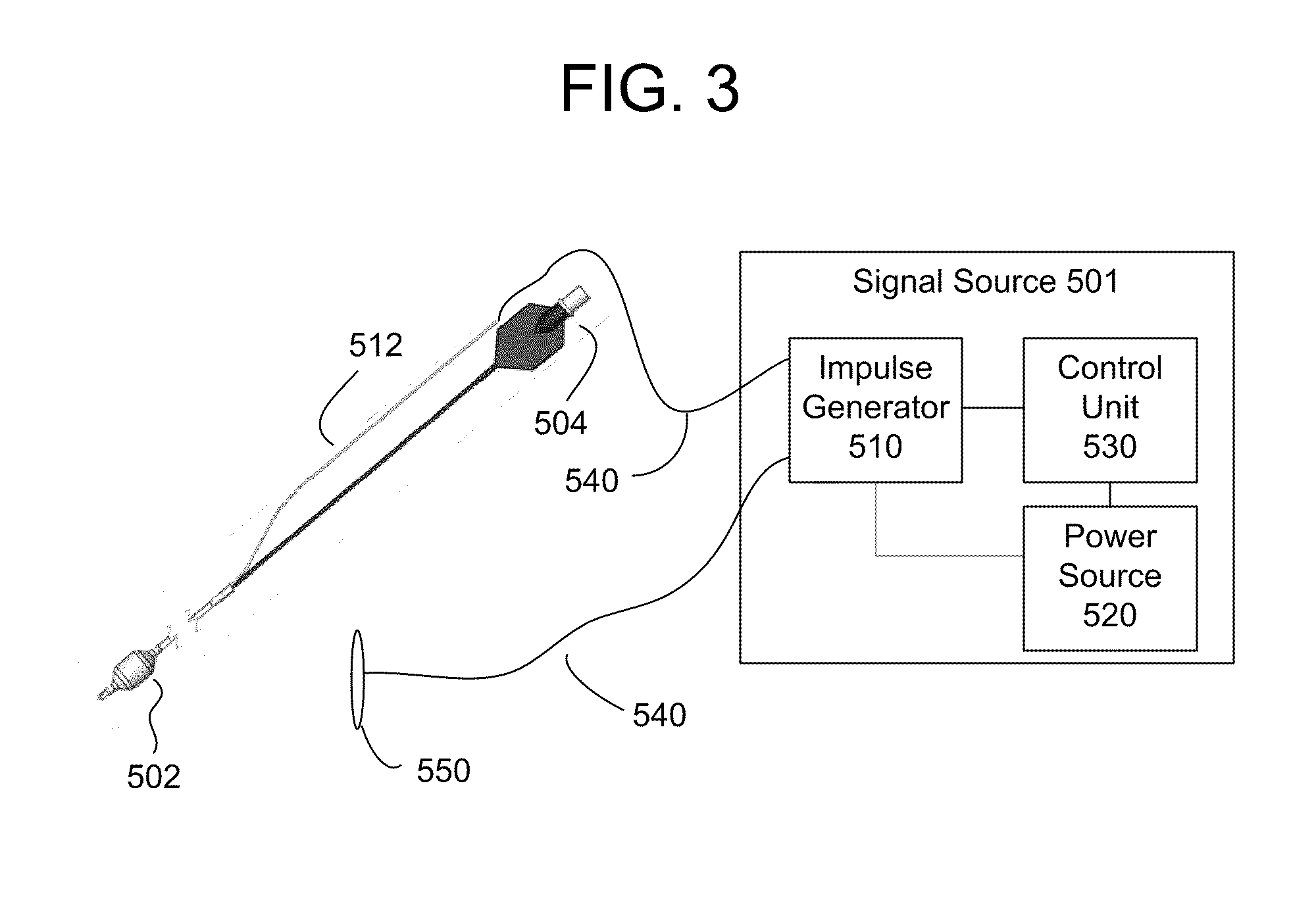Electrical Treatment Of Bronchial Constriction
a technology of electrical impulses and bronchial constriction, which is applied in the direction of esophageal electrodes, artificial respiration, therapy, etc., can solve the problems of inability to achieve immediate dilation of airways and/or heart function, and inability to achieve immediate dilation and/or heart function. , the effect of increasing the dilation and/or heart function
- Summary
- Abstract
- Description
- Claims
- Application Information
AI Technical Summary
Benefits of technology
Problems solved by technology
Method used
Image
Examples
Embodiment Construction
[0048]In the present invention, electrical energy is applied to one or more electrodes to deliver an electromagnetic field to a patient. The techniques of the present invention may be performed in a conventional open surgery environment or in a minimally invasive manner through a natural body orifice (e.g., esophagus or trachea), percutaneously through the patient's skin or using cannulas or port access devices. The invention is particularly useful for applying electrical impulses that interact with the signals of one or more nerves, or muscles, to achieve a therapeutic result, such as relaxation of the smooth muscle of the bronchia. In particular, the present invention provides methods and devices for immediate relief of acute symptoms associated with bronchial constriction such as asthma attacks, COPD exacerbations and / or anaphylactic reactions.
[0049]For convenience, the remaining disclosure will be directed specifically to the treatment in or around the carotid sheath with device...
PUM
 Login to View More
Login to View More Abstract
Description
Claims
Application Information
 Login to View More
Login to View More - R&D
- Intellectual Property
- Life Sciences
- Materials
- Tech Scout
- Unparalleled Data Quality
- Higher Quality Content
- 60% Fewer Hallucinations
Browse by: Latest US Patents, China's latest patents, Technical Efficacy Thesaurus, Application Domain, Technology Topic, Popular Technical Reports.
© 2025 PatSnap. All rights reserved.Legal|Privacy policy|Modern Slavery Act Transparency Statement|Sitemap|About US| Contact US: help@patsnap.com



